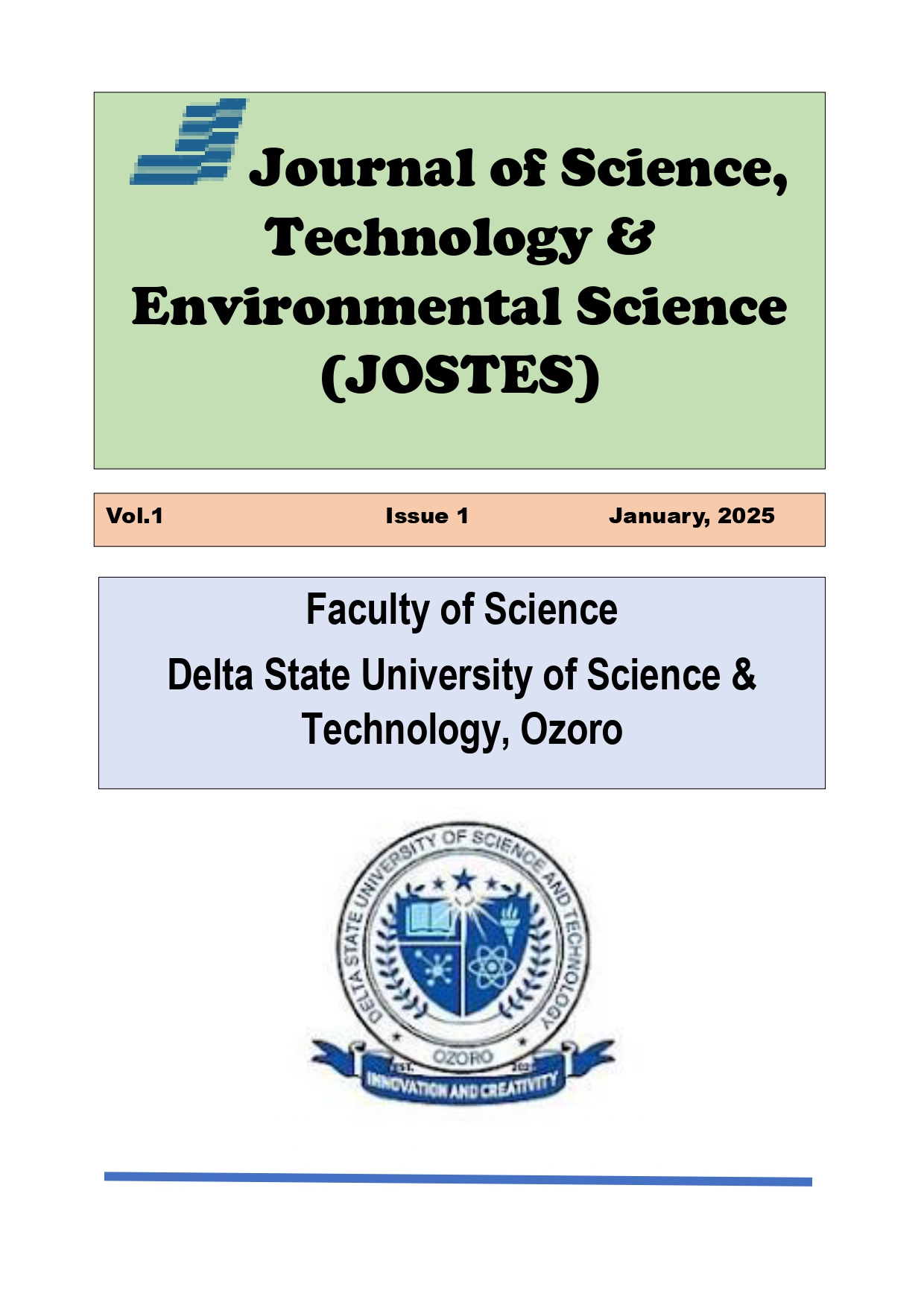Integration of electrical resistivity and lithologic log for aquifer delineation and predition of fluid loss circulation zone in Ogwashi -Asaba formation
Main Article Content
Abstract
Hydro geophysical and borehole drilling survey were carried out at two different closed locations to unravel hydrogeology of the area and delineate lithology causing loss in fluid circulation phenomenon during drilling of borehole. The geophysical survey was carried out at Ibusa town, while borehole drilling was at Ogwashi-Uku in Aniocha South Local Government Area of Delta State. The Four (4) vertical electrical sounding (VES) stations were occupied during surface hydro-geophysical investigation to achieve a relatively good coverage of the area. The processed vertical electrical sounding result was used to determine of depth and nature of the aquifer systems and correlated with the mudlogging result from Ogwashi-Uku. The geo-electric sections for the four sites shows six to seven distinct lithologic layers to depth of penetration. The correlation of the geo-electrical profile depicted from the interpretation of the VES investigation reveals a dry sandy unit of relative thickness (1.8-2.3m) underlying a loamy sandy topsoil. Below the dry sandy unit is mainly clayey sand of about (1.8 -5.2m) thick. Water from most of the boreholes and abandoned water Board borehole in the town show a brown-reddish colouration. This possibly is the effect of the leachates from the overlying ferruginized dry sandy unit. Below this clayey sand unit is a wet sandy unit which could serve as a source of groundwater and perhaps the horizon (at excess depths of 210m) most boreholes in the Ibusa area should be sited for groundwater sustainability

